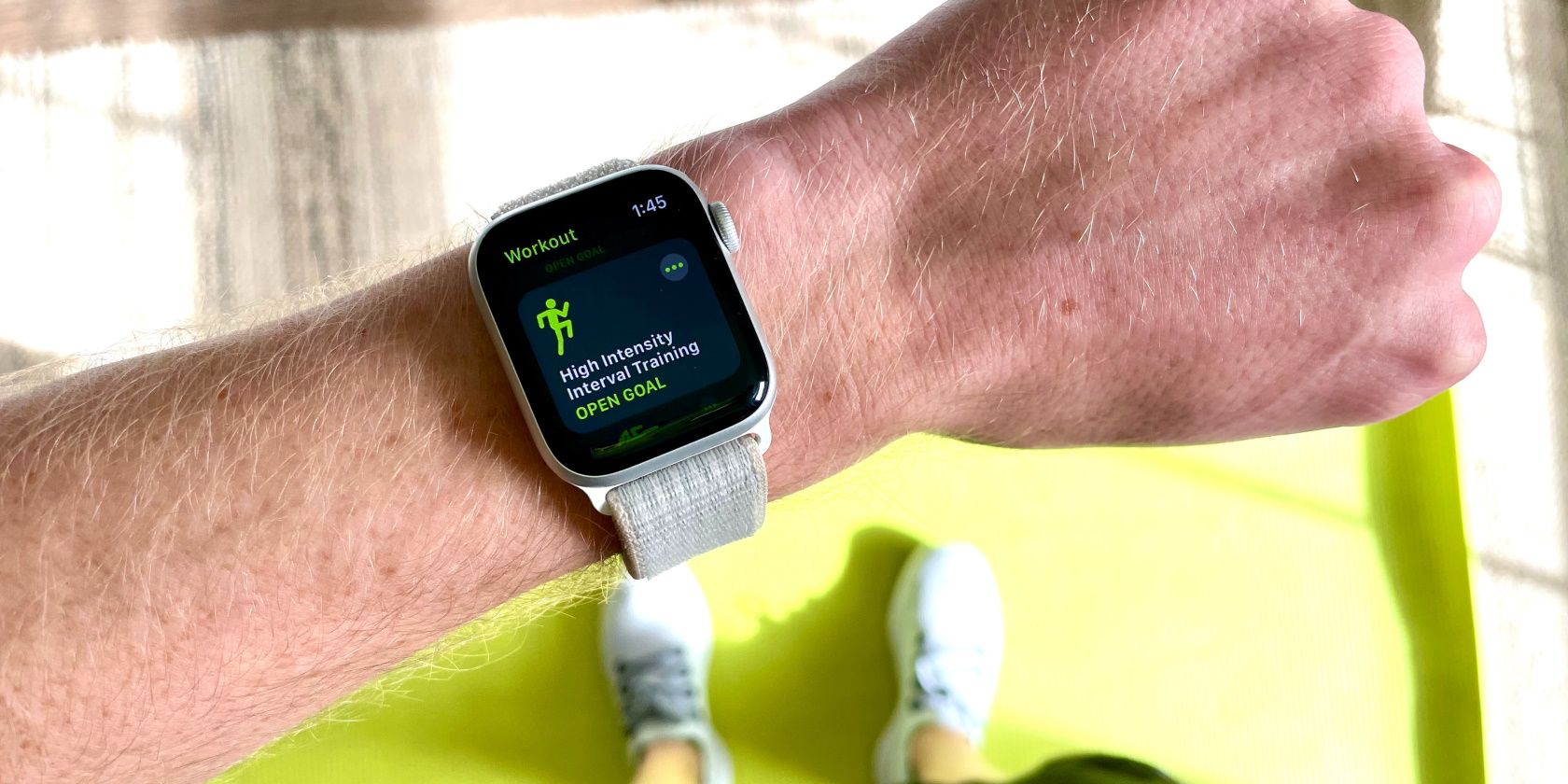Your iPhone and Apple Watch are incredible devices to keep track of many health measurements, including your cardio fitness level.
However, if you're just starting out, you might not know what this actually means. Don't worry; it's an easy and helpful measurement to keep you healthy now and in the future. Here is everything you need to know.
What Is Cardio Fitness?
You've probably noticed that your iPhone keeps track of your average cardio fitness levels in the Health app. This measurement calculates your VO2 max levels in your body.
And what is VO2 max, I hear you ask? This is the maximum (max) amount or volume (V) of oxygen (O2) your body can use during an exercise. To put it simply, this number represents the maximum amount of oxygen your body can consume while you're working out.
The higher your VO2 max, the more oxygen your body can use during a workout. And the more oxygen your body can use, the better you'll be able to handle intensive exercises.
With the help of your Apple Watch, your iPhone can track your cardio fitness or cardiorespiratory fitness levels and let you know if your average level is too low.
How to See Your Cardio Fitness Levels on iPhone
Accessing your cardio fitness levels on your iPhone couldn't be any easier. This is all you need to do:
- Open the Health app.
- Tap the Browse tab in the bottom right corner of your screen.
- Select Heart.
- Scroll down and tap Cardio Fitness.
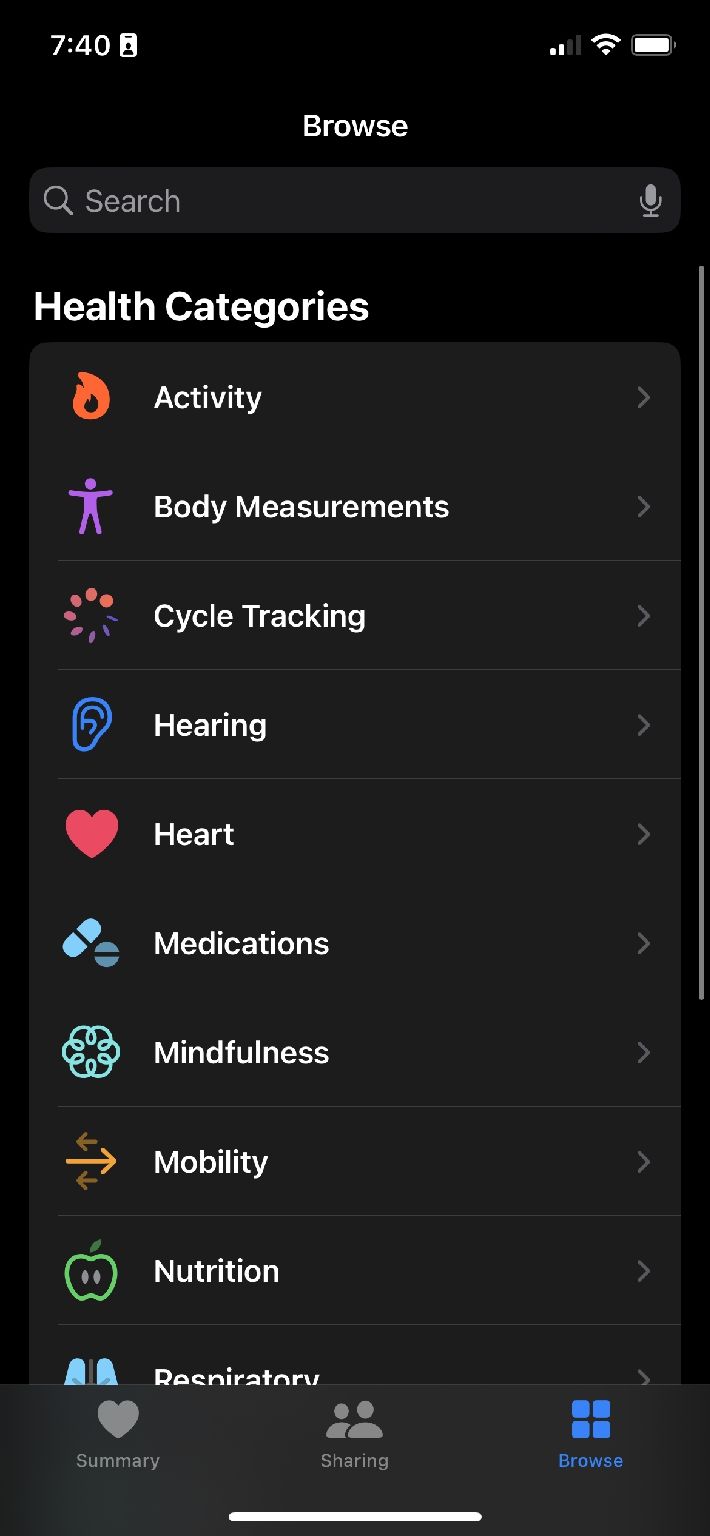
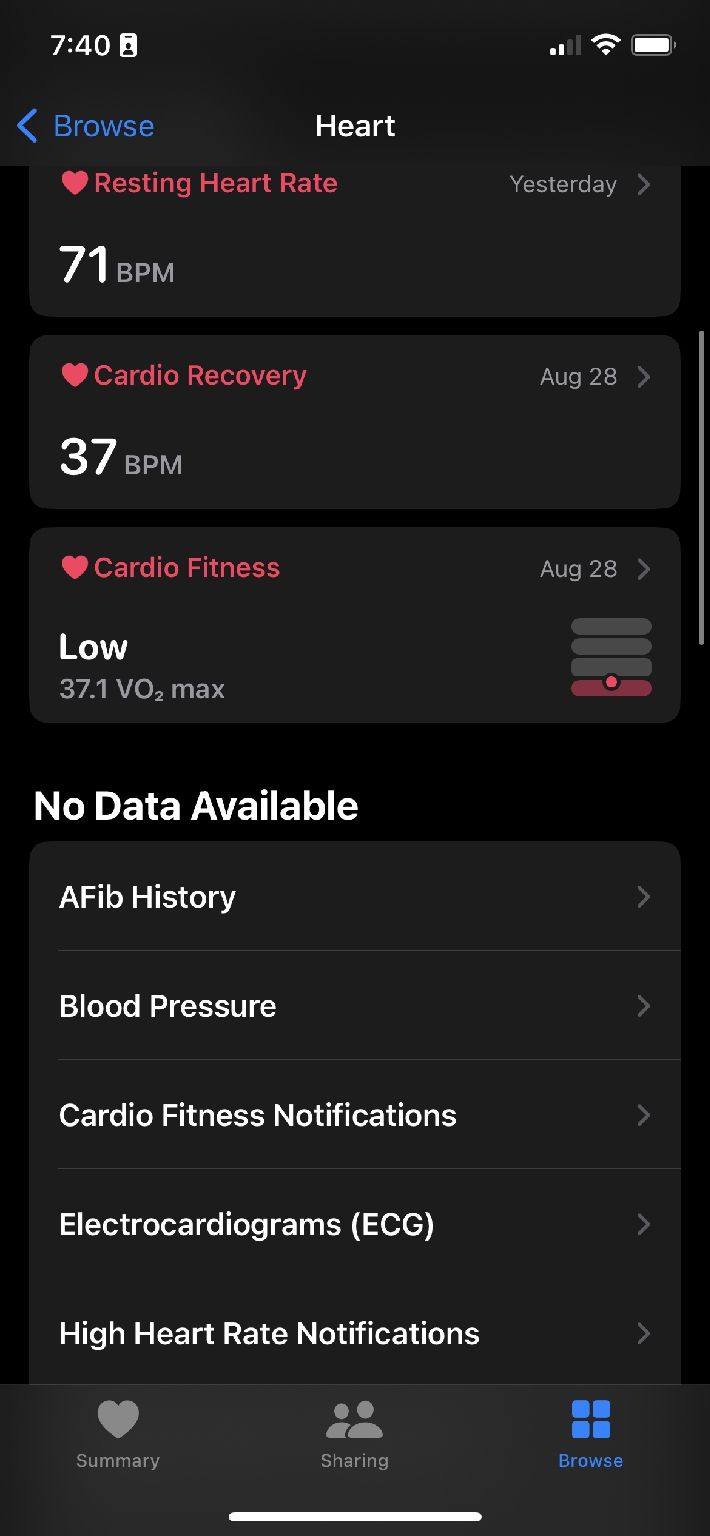
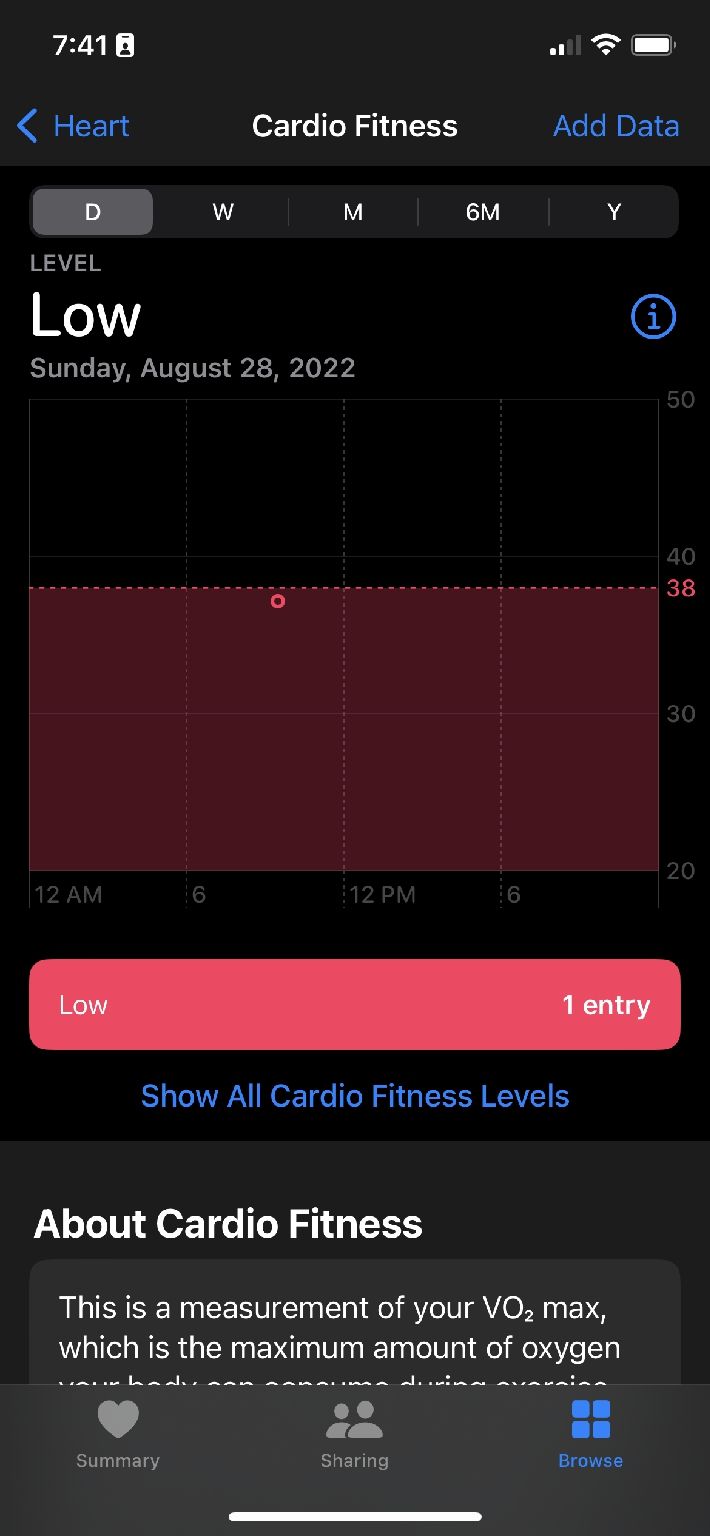
You'll immediately see your cardio fitness levels for the current month. You can switch to see your levels during the day, week, month, the last six months, and the last year.
It might be hard to understand what you're seeing at first, but if you tap the i button near the top right corner of your screen, you'll see the average cardio fitness levels for males and females and the average level depending on the age range. And if you scroll down, the Health app will give you more information about cardio fitness.
Why Is Your Cardio Fitness Level Important?
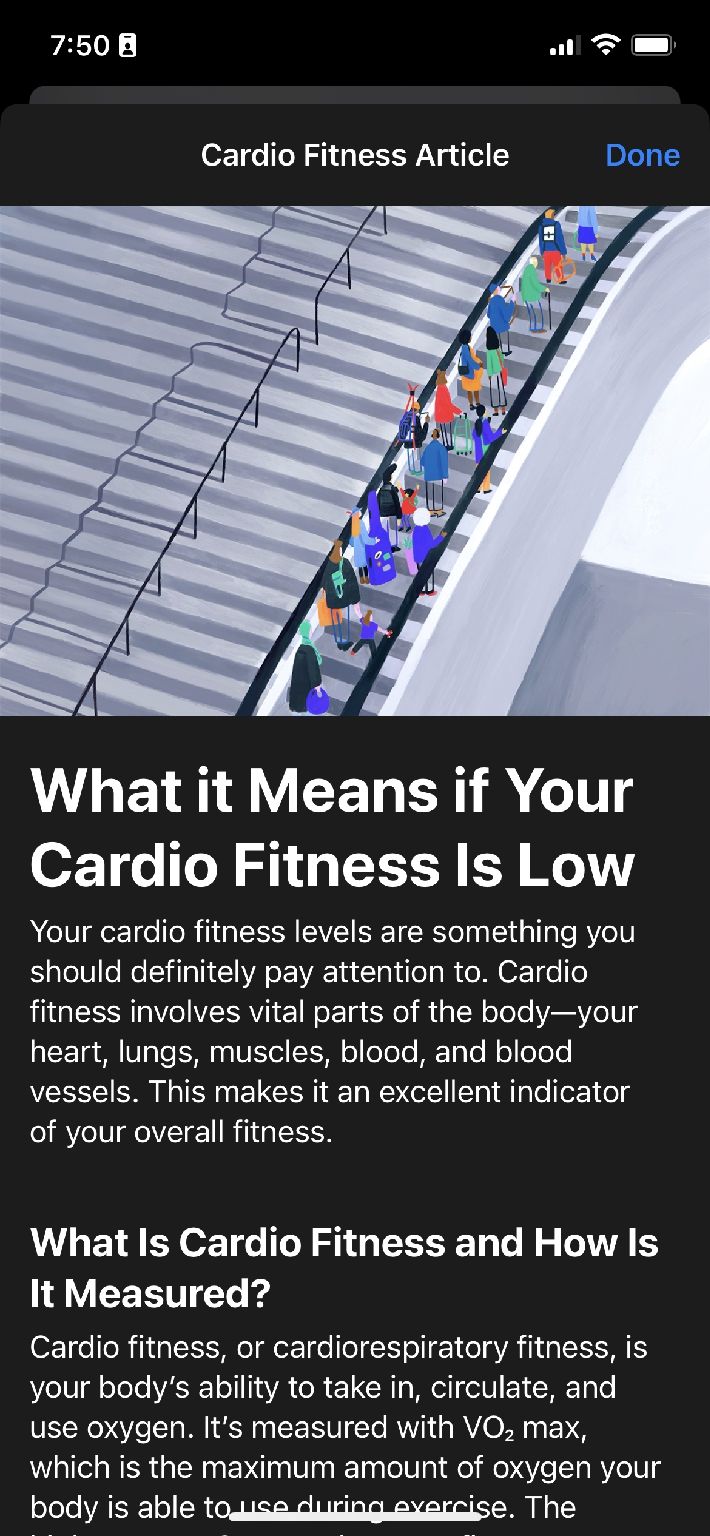
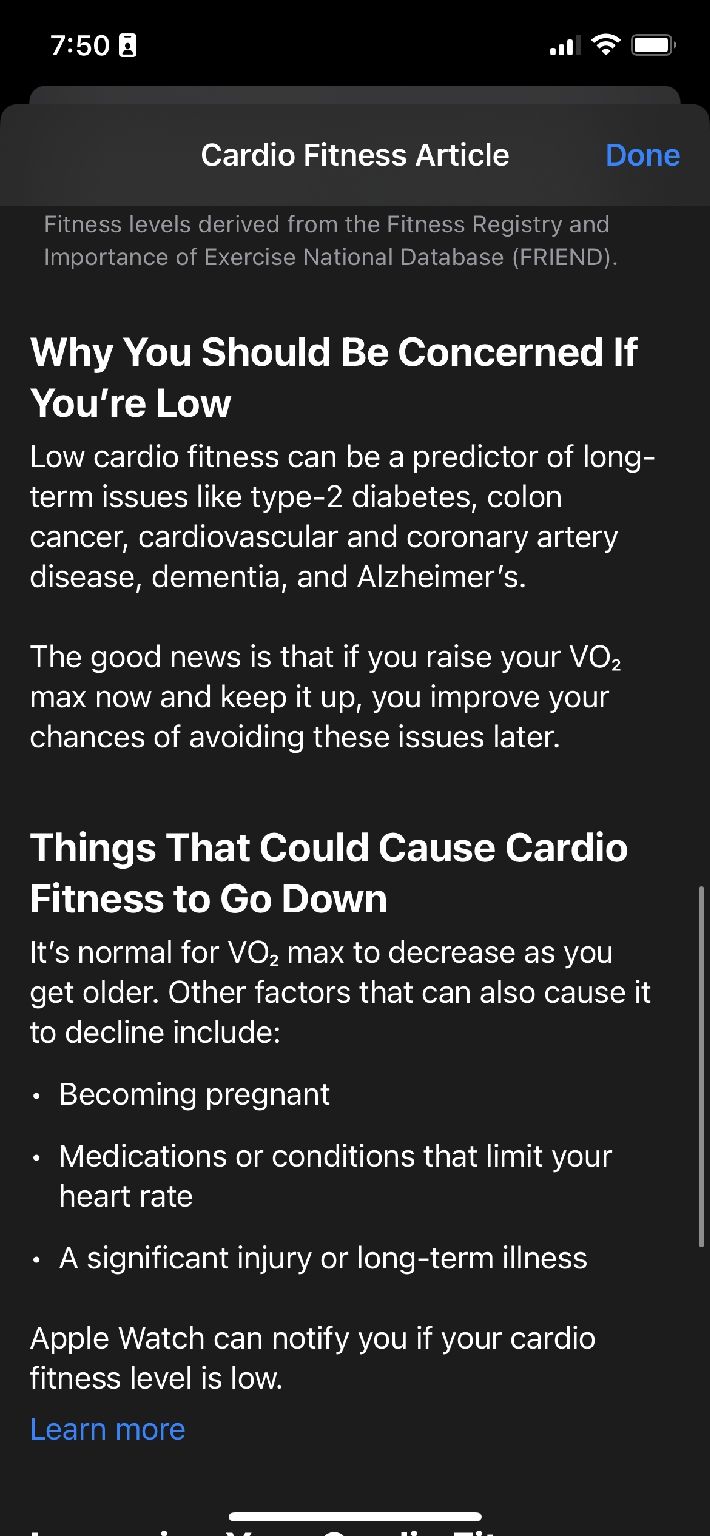
Needless to say that the higher your average level, the better. As we mentioned before, the higher your VO2 Max levels, the better you'll be at handling workouts. However, that's not all your cardio fitness level does.
This measurement can also indicate your current physical health and help predict your long-term health. As the Health app puts it, having a low cardio fitness level can predict future health issues, including type-2 diabetes, colon cancer, and Alzheimer's.
In short, the higher you keep your VO2 Max levels today, will impact your health today and in the future.
How to Improve Your Cardio Fitness Levels
While it's not ideal if your cardio fitness levels are low right now, you can still do something to raise your average levels. Remember that the older you get, the harder it is to keep a higher level of VO2 Max, so you should try to do something about it as fast as possible.
You can increase your average cardio fitness level by adding more intensity to your daily workouts. Or, if you don't work out often, you can increase the frequency of your workouts.
Walking, running, or swimming are good exercises to increase your cardio fitness levels. And, if you've subscribed to Apple Fitness+, you can try high-intensity interval training (HIIT) to make your heart pump. If not, there are also many health and fitness apps you can try.
But above all else, remember that you can and should check in with your doctor. Your iPhone and Apple Watch are great devices, but they can't give you specific advice for your current situation.
Talk to your doctor if you think there may be other reasons your cardio fitness level is low, or you just want to ensure everything's working correctly.
Keep Track of Your Health
Tracking your cardio fitness levels is just one way your Apple Watch and iPhone can help you live a better, healthier life.
Remember that, while it's not the end of the world, you might want to improve your cardio fitness levels as soon as possible. And don't hesitate to talk to your doctor. After all, it's your health we're talking about.

